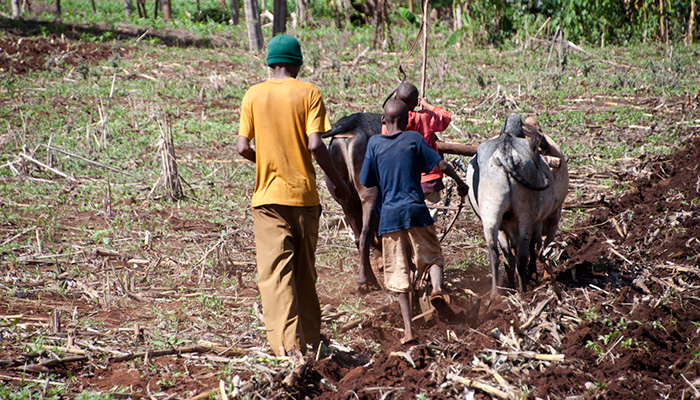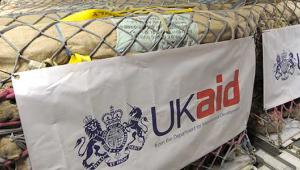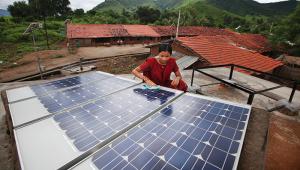Common sense says that you can’t have your cake and eat it.
But common sense doesn’t always win out in the intense political discussions at the Organisation for Economic Cooperation and Development’s Development Assistance Committee.
The DAC’s on-going deliberations on debt relief could be a case in point.
Until this year, donors could report debt relief as aid, aka Official Development Assistance (ODA).
This in itself artificially inflates ODA, as debt relief involves no fresh development money for countries in the Global South.
But now changes to the reporting rules on ODA loans promise to introduce a whole new layer of complexity: unless the rules on debt relief change too to keep pace, donors will be rewarded twice for lending in difficult contexts, inflating their ODA even further.
This is more than just a matter of bean counting.
If there is one single piece of data that dominates public debate, parliamentary scrutiny and policy analysis on development cooperation, it is donors’ total ODA levels – and in particular, the extent to which donors are meeting the UN target for ODA to reach at least 0.7% of Gross National Income.
Artificial inflation of ODA levels, including through debt relief, helps push ODA levels closer to the 0.7% target.
This in turn reduces the pressure donors face to scale up their spending on activities that would genuinely contribute to eradicating poverty and combatting inequalities.
The chances are that ODA inflation, albeit indirectly, leads to missed opportunities to change – and even save – lives in some of the poorest places in the world.
Digging into the detail – the ‘grant equivalent’ system
At the heart of the current discussion on debt relief is the new ‘grant equivalent’system for reporting ODA loans, which will take effect this year.
Under this system, donors calculate the ‘gift’ that they are giving with their loan, by comparing the concessional loan terms they are extending to the borrower with a rate deemed representative of the market.
The difference (in today’s money) between the repayments that a donor will receive on a loan with concessional terms, and the repayments they would receive at the deemed market rate, is known as the grant equivalent.
If the grant equivalent meets a given threshold (relative to the total value of the loan), donors can report it up-front as ODA.[1] Part of the formula for calculating the alleged market rate is an adjustment for risk: the higher the assumed risk of default on the loan, the more up-front ODA a donor can claim.
In other words, the new reporting rules on ODA loans reward donors for the possibility of future debt relief as soon as the loan is granted.
Given that donors will be able to report debt relief as ODA at the time the relief is granted, they now potentially stand to be rewarded a second time if a borrower does indeed default. This is double counting – donors get to have their cake and eat it.
These risks are compounded by another vexed question on the DAC’s agenda – the rules for including some loans to the private sector within ODA. The DAC is proposing to apply the grant equivalent system to these loans too, meaning more up-front rewards for the risk of default, and – unless the debt relief rules change – more double counting.
Back in 2014, DAC members recognised that they needed to review the rules on debt relief, to bring them up to date with the new reporting rules for loans:
“We agree that the cost of risk should not be double counted. Changing the measurement system from net flows to risk-adjusted grant equivalents will therefore also change the basis on which we report on debt relief of ODA loans. We have therefore agreed that the rules on reporting ODA debt relief will need to be updated to rule out double counting, bearing in mind the past need to encourage debt relief initiatives such as HIPC and MDRI.” (DAC High Level Meeting Communiqué 2014, Annex 2 Paragraph 14)
Time to clean up the system for recording debt relief
This update to the rules is also a chance to clean up other problems associated with reporting debt relief as ODA, even beyond the risk of double counting.
For example, Eurodad has long been flagging that the majority of cancelled debt relates to finance that never had a development focus in the first place, such as export credits.
Such commercially-motivated transactions have no place in a system of ODA that really seeks to put the interests of the poorest first, and now would be the perfect time to deal with this by removing debt relief from ODA once and for all.
Yet, rather than taking this opportunity to make the reporting system more meaningful, it appears some DAC members want to backslide on the commitments they made in 2014.
No written documentation on the DAC’s deliberations has been made publicly available.
However, unofficial sources indicated that the most recent proposals would give donors significant rewards for relieving debts, despite the double counting risks involved.
How do DAC members justify such a regressive approach?
Apparently some members argue that donor governments will have no incentive to drop debts, unless debt relief is included within ODA.
For Eurodad, such an argument not only takes a very simplistic view of the motivations for debt relief – it also overlooks the fact that preventing and resolving unsustainable debt situations is a basic matter of human rights.
It also overlooks that in many cases, debt relief is simply an economic necessity, if the debtor is really insolvent.
Far from creating positive incentives, we would argue that a reform in this direction could backfire and do the opposite.
The inflation of ODA through debt relief creates a perverse incentive for donors to put less effort into meeting their longstanding commitments to provide more and better genuine ODA.
In the long-term, such dilution of ODA risks eroding public trust in the whole system.
Thankfully, some principled DAC members seem to share our view, and we understand the most egregious proposals have been pushed back for the time being.
But the lobby for debt relief to be retained within ODA remains strong, and it is too early to say what the final outcome will be.
Eurodad’s appeal to DAC members is simple: debt relief has no place in ODA, least of all now that the loan reporting rules have changed.
For the sake of the credibility of ODA, here’s hoping that common sense does prevail this time.
[1] This calculation itself involves some controversial assumptions, particularly around what interest rate can be deemed to represent the market: set the rate too high, and donors are rewarded for making loans that are actually profitable. But to do justice to these controversies would need a whole other blog.















